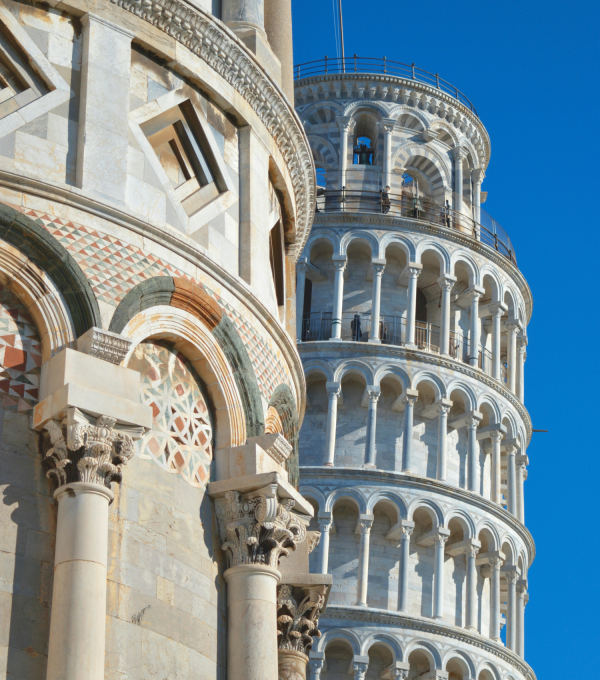While Florence saw the birth of its cultural, artistic and scientific renaissance, a statue known as the Porcellino assumed the role of talisman of good luck. Located in the Loggia del Mercato Nuovo, in the heart of the Tuscan capital, it recalls popular beliefs that still attract visitors from all over the world.

Foto – commons.wikimedia.org
The Porcellino di Firenze is located in the heart of the city and more precisely near the Loggia del Mercato Nuovo, not far from Ponte Vecchio and Piazza della Signoria.
Actually, more than a piglet, visitors find themselves face to face with a realistic reproduction of a wild boar.
Porcellino di Firenze: history and origin
The Porcellino di Firenze has ancient roots and is linked to one of the most powerful families of Tuscan origin, the Medici family.
It comes from a copy of Hellenistic inspiration carved in marble and donated by Pope Pius IV to Cosimo I during the latter’s visit to Rome in the mid-sixteenth century. He took it with him to Florence and set it up at Palazzo Pitti, along with two dogs of the molossoide type made of marble.
Later the original was later brought to the Uffizi, but Cosimo II de’ Medici wanted a bronze version to adorn Palazzo Pitti. This copy was shaped by Pietro Tacca, and acquired personality and vitality thanks to the use of lost wax technique and his mastery in naturalistic details.

Foto – commons.wikimedia.org
After a few years, it was the turn of Ferdinando II de’ Medici who was Grand Duke of Tuscany from 1621 to 1670 to decide to modify the work in a fountain and place it next to the Loggia del Mercato Nuovo. In addition to its decorative function, the fountain also had a practical value since it provided water to merchants who traded valuable fabrics under the loggia.
The bath of Pietro Tacca
In addition to the Porcellino, Pietro Tacca also created a base depicting the habitat of the animal and an original bronze tank that served as a reservoir for the collection of water.
The shape of the base was designed octagonal, with the front part extended forward to accommodate a small pool where water could have flowed from the mouth of the Porcellino.
This base was immediately presented as a true masterpiece: it depicted the marshy environment in which the wild boar lives, complete with plants and animals such as reptiles, amphibians and molluscs, all carefully rendered with extraordinary realism by the student of the Flemish Giambologna.
In the mid-nineteenth century the skilled sculptor and craftsman Clemente Papi restored the statue (including the base) to remedy the damage caused by the flow of water and time.
In the nineties, after various interventions, the entire complex was removed and subsequently moved to the Bardini Museum while in its place was placed a copy reproduced by the Ferdinando Marinelli Artistic Foundry.
The aesthetic analysis of Porcellino
The sculpture represents a young wild boar in a dynamic posture, with the muzzle facing upwards and the nostrils dilated.
The texture of the coat is executed with extraordinary skill, emphasizing the strength and determination of the animal.
The light that is reflected on the surface creates a striking play of shadows and lights, giving depth and vitality to the surface of Porcellino.
Lucky charm: how Porcellino works in Florence
According to popular tradition, the touch of the boar’s nose is synonymous with good luck. So, thanks to the continuous caresses of thousands of hands, it is no wonder that this small nose today shines.
The procedure to make sure the fortune of the fountain of the Porcellino of Florence, as the legend says, is a little more complex: you start by inserting a coin in the mouth of the boar, after stroking his nose. If the coin, in its path, exceeds the grate from which the water flows then luck will come.
It must be said that the inclination of the mouth of the Porcellino di Firenze is such that only a heavy coin can easily overcome this “test of destiny”.

Foto – commons.wikimedia.org
The connection between Porcellino di Firenze and Hans Christian Andersen
The story of the Porcellino di Firenze has gone beyond the borders of Florence, becoming the protagonist of one of the most famous fairy tales by the Danish writer Hans Christian Andersen.
After a trip to the city, Andersen was so fascinated by the statue depicting the wild boar and its meaning that he decided to dedicate “The Little Pig of bronze. The story tells of a poor child who, hungry and alone, stops in front of the statue and hugs it. At this point, the piggy comes to life and guides the boy on a fantastic journey through the history and magic of the most beautiful places in Florence.
The deep bond that Andersen had developed with the city and his iconic statue of the Piglet is also remembered by a commemorative plaque placed on the Loggia del Mercato Nuovo.
The Lucky Pig in the world
In the world, there are numerous replicas of the Fontana del Porcellino. For example, one of them is located in Belgium within the park of Enghien Castle. Another is located in France and more precisely in the Place Richelme in Aix-en-Provence. Two additional copies of the boar statue are in Munich. In addition there is also a replica of the campus of the University of Waterloo, Ontario.
There is also a copy at the entrance to Sydney Hospital. It is the work donated in memory of the doctor Piero Fiaschi by the Marchesa Fiaschi Torrigiani. Like the original statue, it is believed to be good luck to rub its nose.
The Fontana del Cinghialino is located in the main square of Rispescia. It is a reproduction of the famous donated to the village by the City of Florence on the day of the inauguration of the hamlet of Grosseto.
Another specimen is found in the city of Guayaquil (Ecuador) in the Malecón Simón Bolivar and another at the Parterres at Park 57 in New York.
Copertina: ilgiornale



